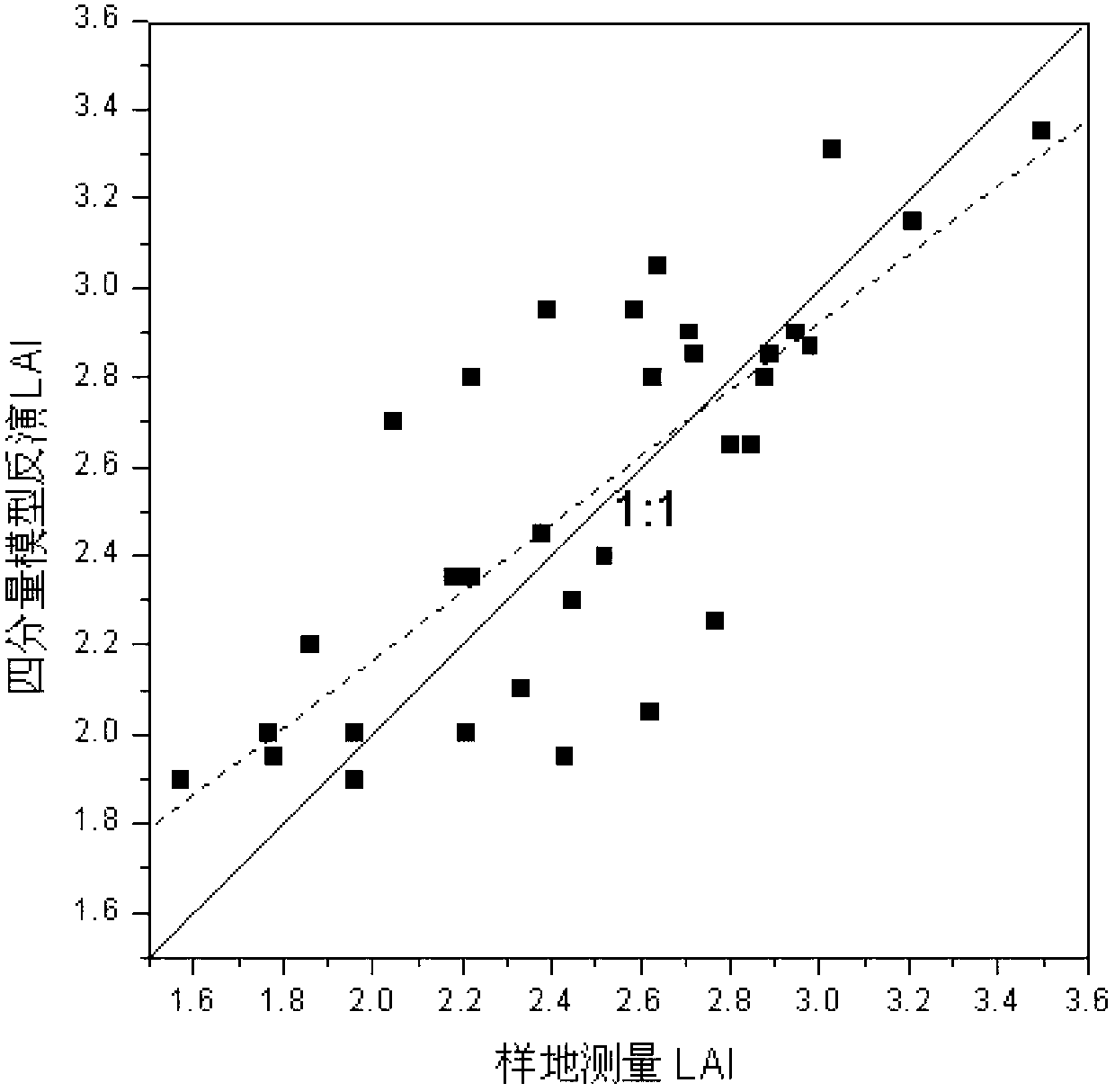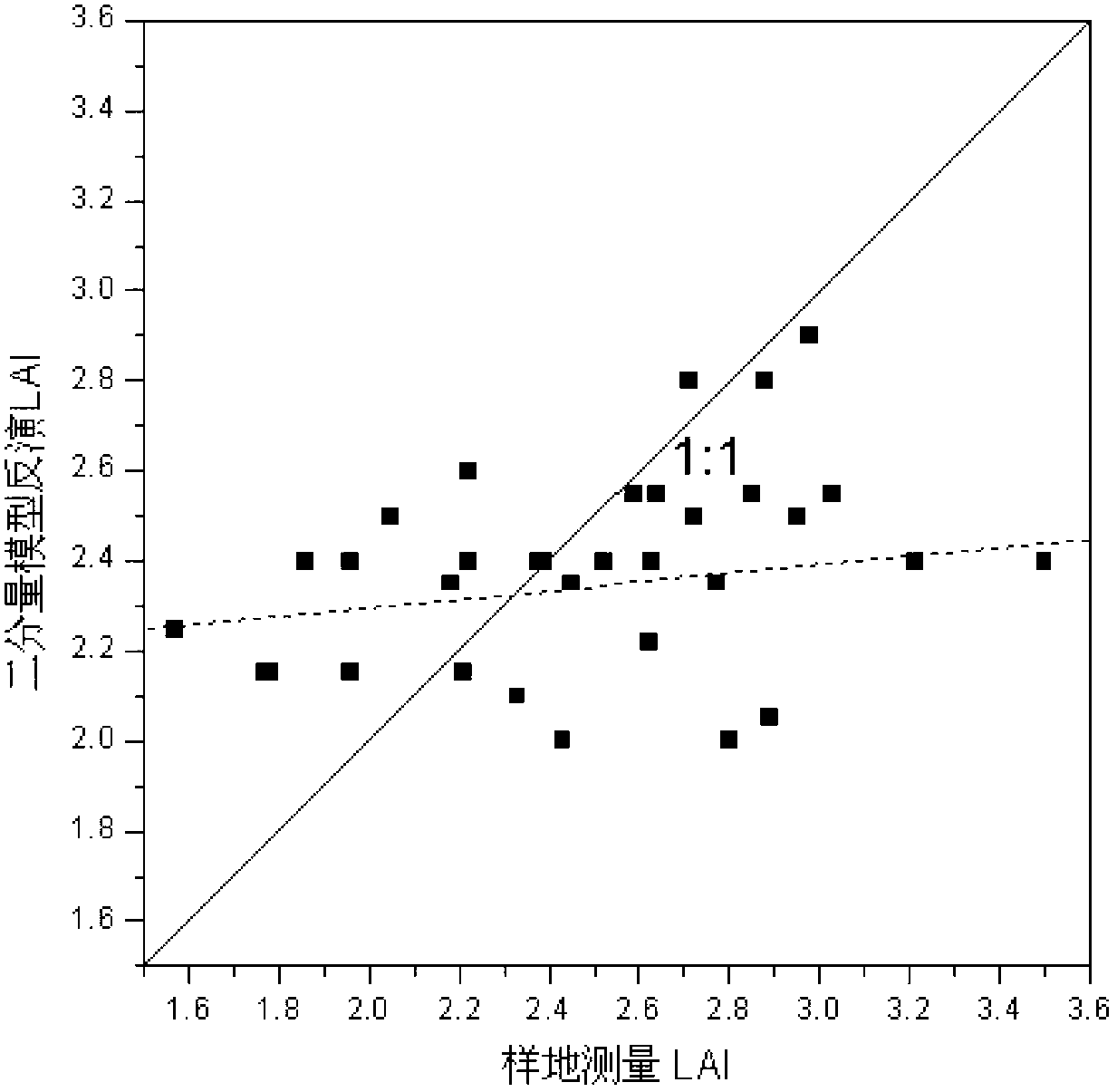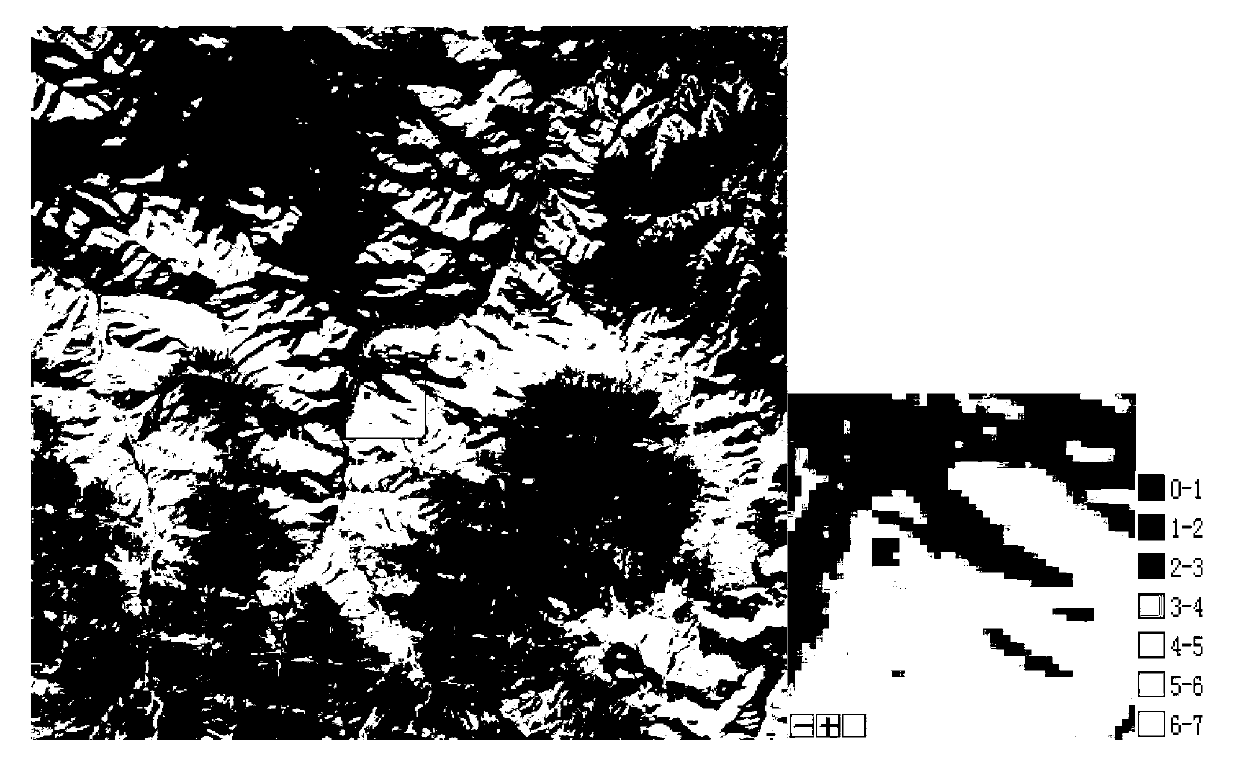Four-component optical physical model based inversion method of leaf area index
A technology of leaf area index and physical model, which is applied in the direction of using optical devices, measuring devices, instruments, etc., can solve the problems of inaccurate simulation results of physical models, and achieve the effect of improving inversion accuracy, facilitating simulation, and having fewer input parameters.
- Summary
- Abstract
- Description
- Claims
- Application Information
AI Technical Summary
Problems solved by technology
Method used
Image
Examples
specific Embodiment approach 1
[0019] Specific implementation mode 1: Combination figure 1 To explain this embodiment, the leaf area index inversion method based on the four-component optical physical model described in this embodiment includes the following specific steps:
[0020] The four-component optical physical model is:
[0021] R 4 = R ∞ , t K ∫ - 1 0 ( e KLh - e KLh e αLh ) Ldh + R ∞ , υ K ∫ - 1 0 e KLh e αLh Ldh
[0022] + R s e - αL e - KL + R sz ( e - KL - e - KL e - αL ) - - - ( 2 )
[0023] Among them, α and K are extinction coefficients:
[0024] K=(2 / π)L[(β v -π / 2)cos θ f +sinβ v tan θ v sin θ f ]
[0025] α=(2 / π)L[(β s -π / 2)cos θ f +sin β s tan θ v sin θ f ]
[0026] R 4 The vegetation canopy reflectance simulated by the four-component optical physical model, R ∞,υ Is the reflectance of vegetation light...
specific Embodiment approach 2
[0038] Specific embodiment 2: This embodiment further defines the leaf area index inversion method based on the four-component optical physical model described in the first embodiment. The four-component optical physical model is obtained by improving the existing two-component physical model. The existing two-component physical model is:
[0039] R 2 =R t (1-e -αL )+R s e -αL (1)
[0040] Where R 2 Is the vegetation canopy reflectivity simulated by the two-component physical model, R t Is the vegetation canopy reflectance when the vegetation canopy closure is close to 1, and the vegetation canopy thickness is infinitely deep, R s It is the bidirectional reflectance of the soil background.
specific Embodiment approach 3
[0041] Specific embodiment 3: This embodiment further defines the leaf area index inversion method based on the four-component optical physical model described in Embodiment 1. The root mean square error described in step 3 adopts the formula:
[0042] RMSE = 1 n b X j = 1 n b ( ρ j - ρ ′ j ) - - - ( 3 ) ,
[0043] Obtained by calculation, where: ρ′ j Represents the four-component optical physical model to simulate vegetation canopy reflectivity, ρ j Indicates the reflectivity of remote sensing image, n b Is the number of bands.
PUM
 Login to View More
Login to View More Abstract
Description
Claims
Application Information
 Login to View More
Login to View More - R&D
- Intellectual Property
- Life Sciences
- Materials
- Tech Scout
- Unparalleled Data Quality
- Higher Quality Content
- 60% Fewer Hallucinations
Browse by: Latest US Patents, China's latest patents, Technical Efficacy Thesaurus, Application Domain, Technology Topic, Popular Technical Reports.
© 2025 PatSnap. All rights reserved.Legal|Privacy policy|Modern Slavery Act Transparency Statement|Sitemap|About US| Contact US: help@patsnap.com



